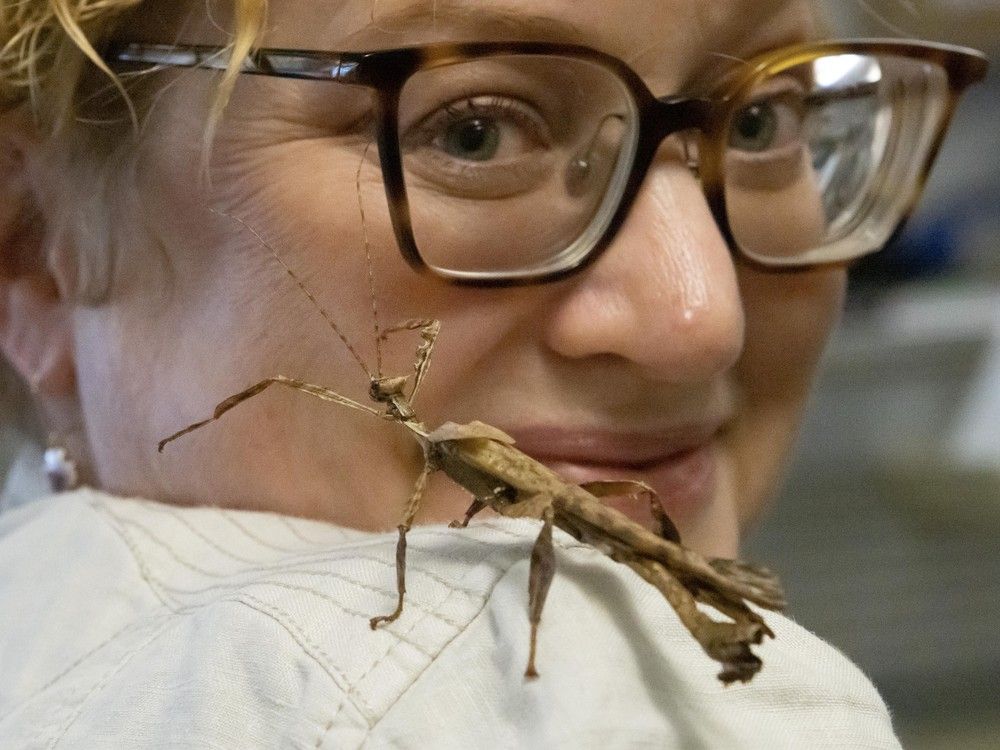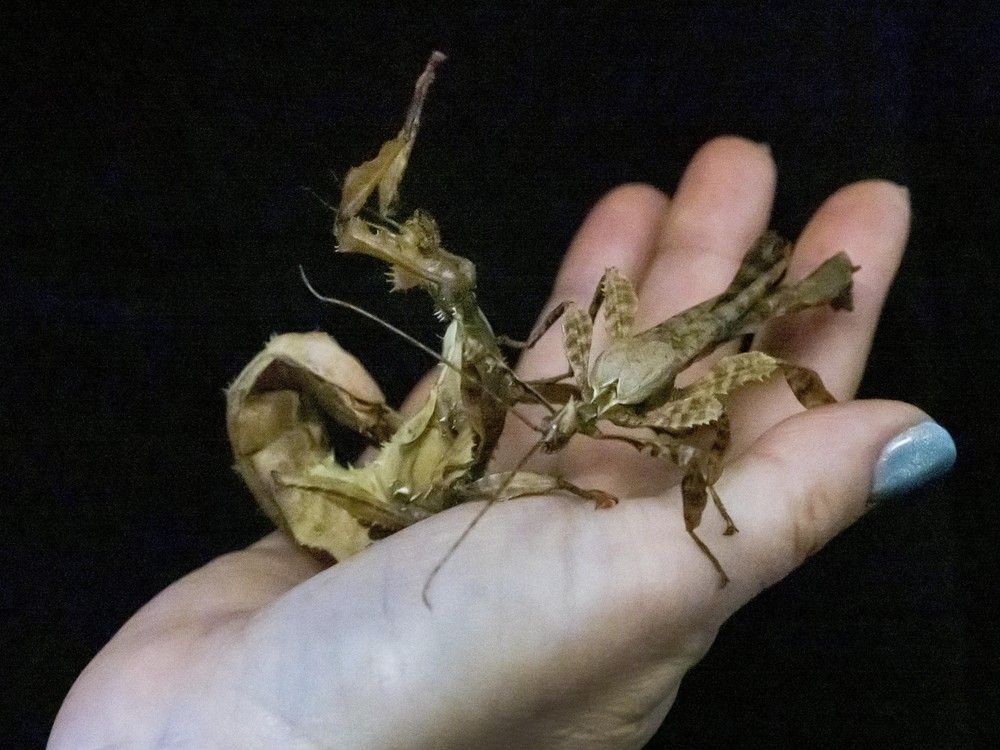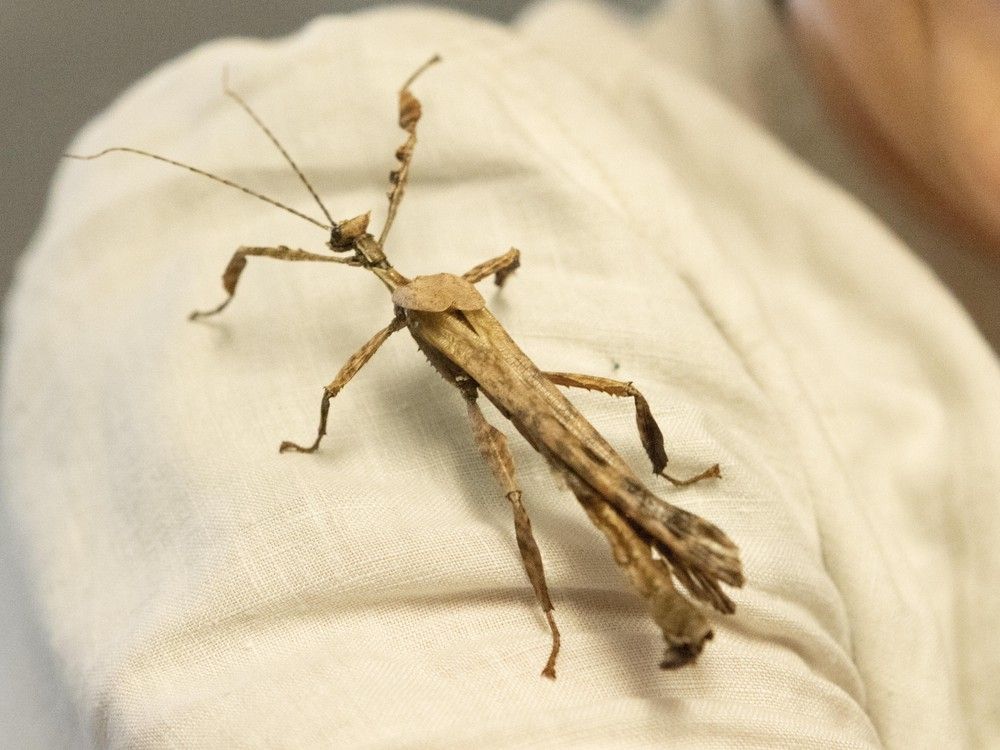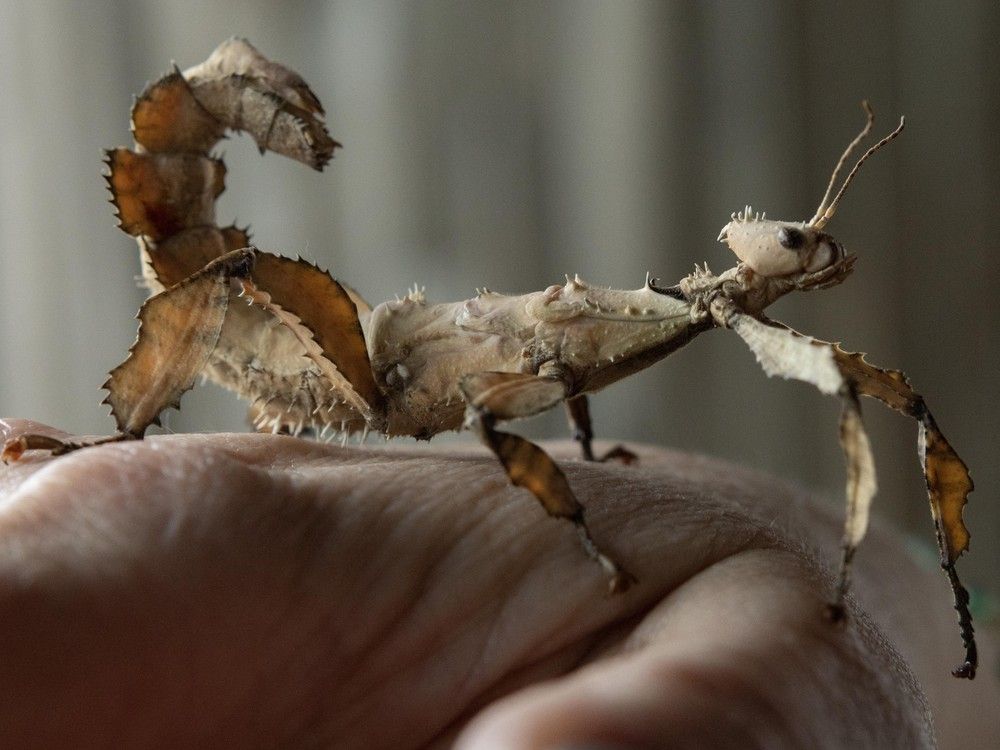
It’s a boy! Science World staffers were in disbelief after a male stick insect was born into an all-female colony in what is being described as an “extremely rare” event.
Science World’s stick insect colony has at least 20 adult insects inside the large mesh enclosure in the Sara Stern gallery, the centre’s natural history wing, nestled among a beaver lodge, walk-in cedar tree, and other critters.
For decades, these phasmids, or stick insects, have been reproducing via parthenogenesis, a form of asexual reproduction that essentially produces a clone of the mother. Until last month.
One of the facilitators giving the juvenile insects some brambles did a double take when they spotted a six-week old insect that had recently shed its skin, said gallery curator Christine Olsen.
“He’s long and slim and slender and has huge antennae that is four to five times the length of a female’s, and he has wings and can fly,” she said. “His morphology is completely different.”

In contrast, females of this species are bulky and robust, with a big curled abdomen that makes them look like a curled leaf. They also have small wings and don’t fly.
In stick insects, females have two X chromosomes while males have one X chromosome. The hypothesis is that the male insect, affectionately called Larry, had some sort of glitch in the development process and ended up with only one X chromosome.
The mutation could have happened during cell division resulting in an egg with only one chromosome, or there could have been two X chromosomes to begin with but the other was non-functional.
“Something interesting happened to the egg that would grow up to be Larry, but we don’t know what it was,” said Olsen. “That’s half the fun — the mystery of why.”
Such instances are extremely rare, she said.

Over the last three years, there had been about 200 stick insects that hatched in the colony, but no males. Simon Fraser University’s phasmid department keeps its own colonies and has not seen a “spontaneously generating male,” said Olsen. There are cases in literature, but that’s also rare.
Native to Australia and New Guinea, giant prickly stick insects like Larry are typically brown, with spikes on their bodies, and resemble dying leaves of plants. Camouflage masters, they even mimic leaves by swaying side to side if there’s a gentle breeze, said Olsen.

Visitors eager to see Larry at Science World, however, will be disappointed. Larry is not available to the public as he cannot be in the public enclosure with the other female stick insects because he is a flight risk and could get trapped in other attractions or worse, the building’s exposed pipes and ventilation.
Instead, Larry lives in his own glass container in an open-plan office in the back with plenty of human company. “He has a very lovely life. He gets his own space, he gets people saying hello to him. He’s spoiled rotten,” said Olsen.
While the species can also reproduce through sexual reproduction, it is unclear if Larry has the right body parts in order to mate.
He was put in an enclosure with a female, but “they were completely uninterested in each other,” said Olsen, laughing. She’s not sure if they’ll bother trying to make Larry mate with another female as the centre doesn’t need the insects to reproduce in that way.
The colony has successfully sustained itself through parthenogenesis, she said. “We’re happy if we don’t get another male. We won’t have to worry about it flying and getting stuck somewhere and we have to fix it.”